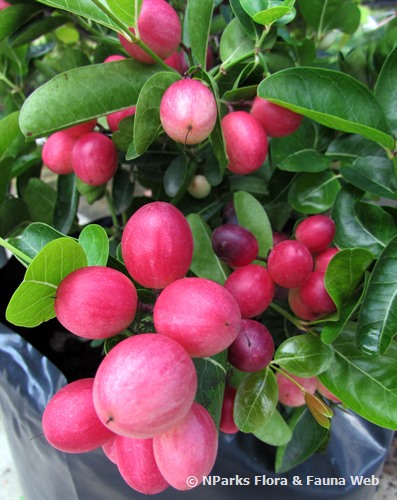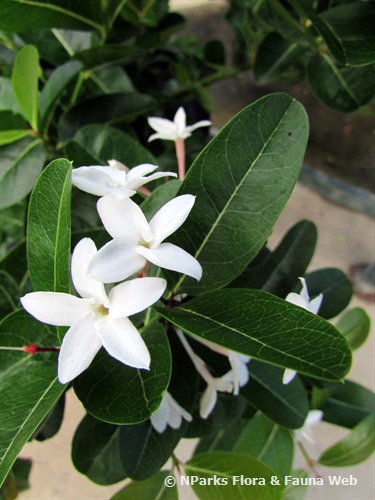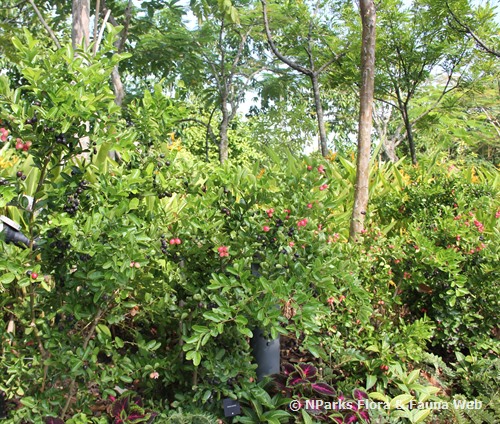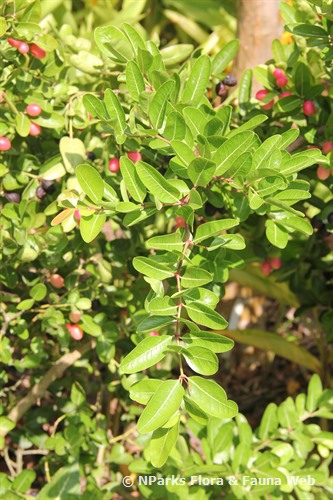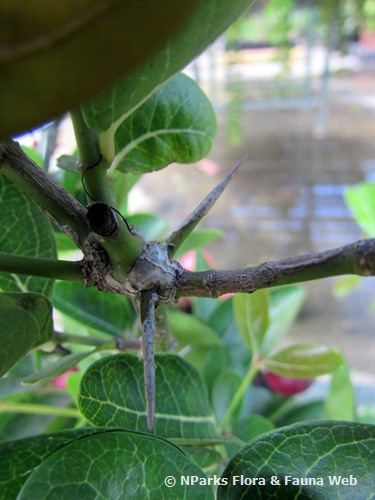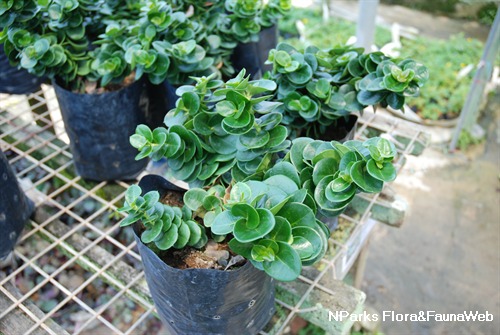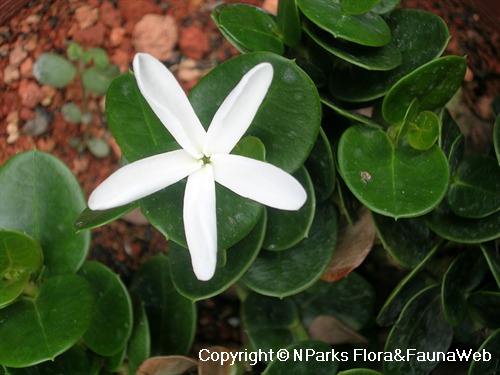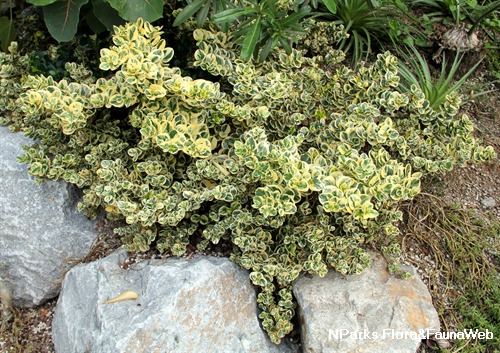.jpg)
Back
Carissa carandas
| Family Name: | Apocynaceae |
| Synonyms: | Carissa salicina, Echites spinosus |
| Common Name: | Karandang, Kerenda, Karonda, 刺黄果 |
Name
Classifications and Characteristics
| Plant Division | Angiosperms (Flowering Seed Plants) (Dicotyledon) |
|---|---|
| Plant Growth Form | Climber, Shrub |
| Lifespan (in Singapore) | Perennial |
| Mode of Nutrition | Autotrophic |
| Maximum Height | 5 m |
Biogeography
| Native Distribution | India, Bangladesh |
|---|---|
| Native Habitat | Terrestrial |
| Preferred Climate Zone | Tropical, Sub-Tropical / Monsoonal |
Description and Ethnobotany
| Growth Form | It is a woody shrub to a small tree, with climbing habit. It can grow up to 5 m tall. |
|---|---|
| Foliage | Leaves are broadly ovate to oblong in shape, measuring up to 7 cm long and 4 cm wide, with broadly cuneate to rounded base and apiculate apex. |
| Stems | Stems have spines which are simple to slightly forked, measuring about 5 cm. |
| Flowers | Inflorescence in cyme arrangement, fragrant white flowers, tubular up to 2 cm long, with lanceolate lobes which are overlapping to right. |
| Fruit | Berries, reddish purple, globose to broadly oval in shape, measuring about 2.5 cm x 2 cm. |
| Cultivation | Carissa carandas is cultivated for its edible fruits. It is a hardy plant, and can grow well in a wide range of soils although it prefers a medium-acid soil (pH 6.5 - 8). It is tolerant to drought and survives well in areas with high temperatures. |
| Ethnobotanical Uses | Edible Plant Parts : Edible Fruits Medicinal: The fruits of Carissa carandas are used to provide anti-inflammatory effects. Others: The fruit tastes sour when matures but sourish sweet when fully ripens. It is eaten raw and can be made into jam, jellies or puddings. |
Landscaping Features
| Landscaping | Due to the hardiness towards trimming, the plant is suitable as a hedge and an excellent barrier. |
|---|---|
| Desirable Plant Features | Ornamental Flowers, Ornamental Fruits, Fragrant (Flowers) |
| Landscape Uses | General, Suitable for Roadsides, Hedge / Screening |
Fauna, Pollination and Dispersal
| Fauna Pollination Dispersal Associated Fauna | Bird-Attracting (Fruits) |
|---|---|
| Pollination Method(s) | Biotic (Fauna) |
| Seed or Spore Dispersal | Biotic (Fauna) |
Plant Care and Propagation
| Light Preference | Full Sun |
|---|---|
| Water Preference | Moderate Water, Little Water |
| Plant Growth Rate | Moderate |
| Rootzone Tolerance | Moist Soils, Well-Drained Soils |
| Propagation Method | Seed, Stem Cutting |
Foliar
| Foliage Retention | Evergreen |
|---|---|
| Mature Foliage Colour(s) | Green |
| Mature Foliage Texture(s) | Smooth |
| Prominent Young Flush Colour(s) | Green |
| Young Flush Texture(s) | Smooth |
| Foliar Type | Simple / Unifoliate |
| Foliar Arrangement Along Stem | Opposite |
| Foliar Attachment to Stem | Petiolate |
| Foliar Shape(s) | Non-Palm Foliage (Ovate) |
| Foliar Venation | Pinnate / Net |
| Foliar Margin | Entire |
| Foliar Apex - Tip | Apiculate |
| Foliar Base | Cuneate, Rounded / Obtuse |
Floral (Angiosperm)
| Flower & Plant Sexuality | Bisexual Flowers |
| Flower Colour(s) | White |
|---|---|
| Flower Texture(s) | Smooth |
| Flower Grouping | Cluster / Inflorescence |
| Flower Location | Terminal |
| Individual Flower Shape | Tubular |
| Inflorescence Type | Cyme |
| Flowering Period | Free-Flowering |
Image Repository
Others
| Master ID | 33084 |
|---|---|
| Species ID | 7498 |
| Flora Disclaimer | The information in this website has been compiled from reliable sources, such as reference works on medicinal plants. It is not a substitute for medical advice or treatment and NParks does not purport to provide any medical advice. Readers should always consult his/her physician before using or consuming a plant for medicinal purposes. |

.jpg)
.jpg)
